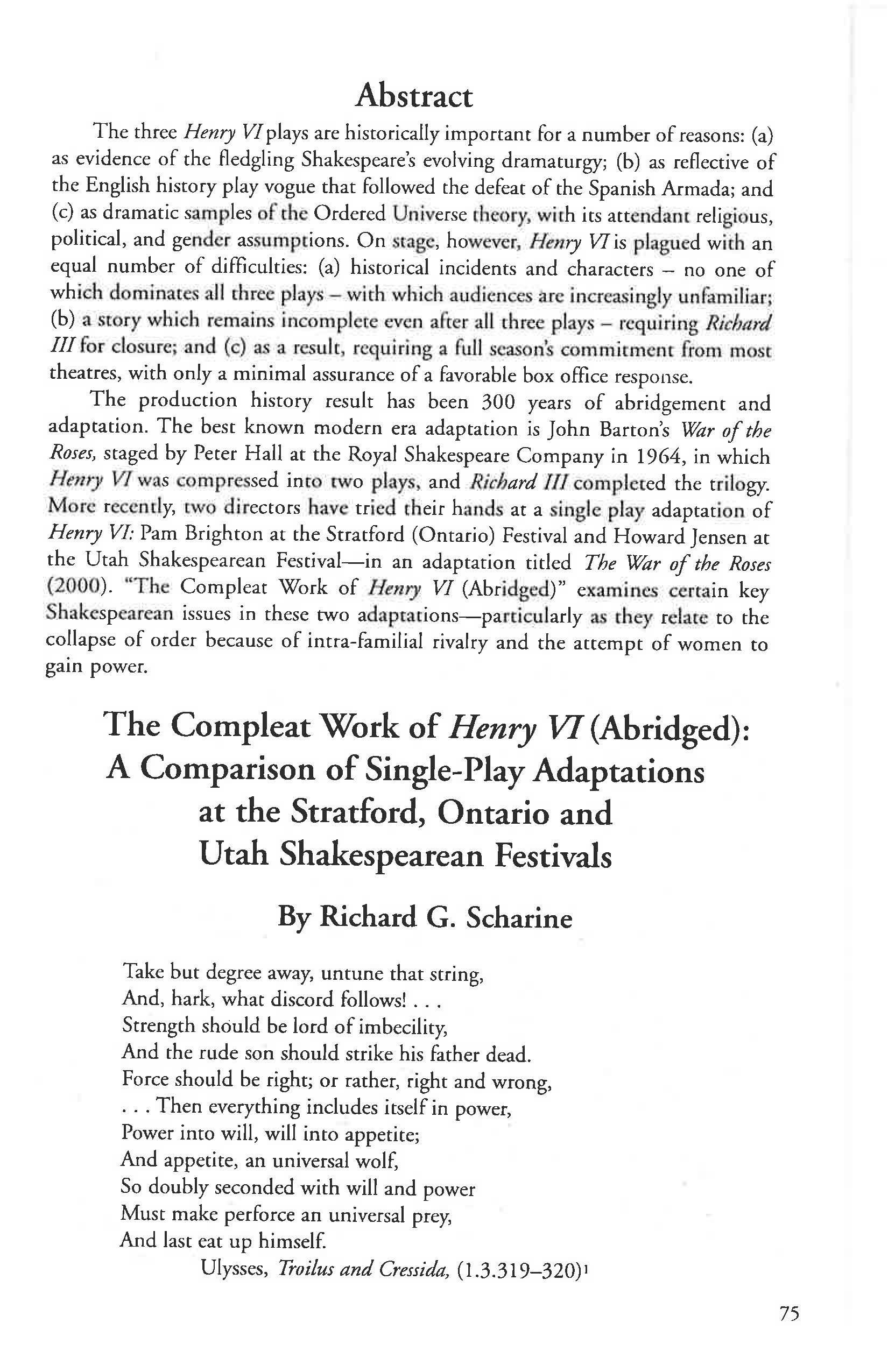The Compleat Work of Henry VI (Abridged): A Comparison of Single-Play Adaptations at the Stratford, Ontario and Utah Shakespearean Festivals
Main Article Content
Abstract
The three Henry VI plays are historically important for a number of reasons: (a) as evidence of the fledgling Shakespeare's evolving dramaturgy; (b) as reflective of the English history play vogue that followed the defeat of the Spanish Armada; and (c) as dramatic samples of the Ordered Universe theory, with its attendant religious, political, and gender assumptions. On stage, however, Henry VI is plagued with an equal number of difficulties: (a) historical incidents and characters - no one of which dominates all three plays - with which audiences are increasingly unfamiliar; (b) a story which remains incomplete even after all three plays - requiring Richard III for closure; and (c) as a result, requiring a full season's commitment from most theatres, with only a minimal assurance of a favorable box office response.
The production history reult has been 300 years of abridgement and adaptation. The best known modern era adaptation is John Barton's War of the Roses, staged by Peter Hall at the Royal Shakespeare Company in 1965, in which Henry VI was compressed into two plays, and Richard III completed the trilogy. More recently, two directors have tried their hands at a single play adaptation of Henry VI: Pam Brighton at the Stratford (Ontario) Festival and Howard Jensen at the Utah Shakespearean Festival--in an adaptation titled The War of the Roses (2000). "The Compleat Work of Henry VI (Abridged)" examines certain key Shakespearean issues in these two adaptations--particularly as they related to the collapse of order because of intra-familial rivalry and the attempt of women to gain power.
